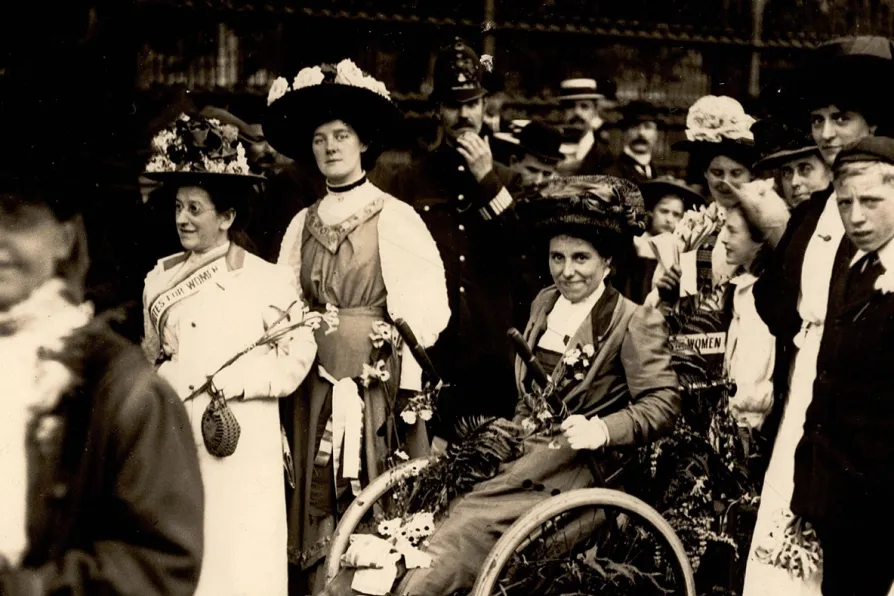
 Gone but not forgotten: Suffragette Rosa May Billinghurst (in wheelchair)
[LSE Library/Wikicommons]
Gone but not forgotten: Suffragette Rosa May Billinghurst (in wheelchair)
[LSE Library/Wikicommons]
REBEL Footprints is about grassroots movements for change. Celebrating outstanding and iconoclastic individuals, it highlights those who based their hopes for change on a collective
movement.
Some, such as docks-strike leader Ben Tillett, suffragette Emmeline Pankhurst, secularist and anti-war campaigner Bertrand Russell, writer and activist Eleanor Marx and Labour politician George Lansbury, are more well-known.
But readers will also meet individuals with whom they may be less familiar, such as Chartist leader William Cuffay, whose father was born into slavery in the Caribbean, sweatshop worker and anarchist campaigner Milly Witkop, suffragette Rosa May Billinghurst — who undertook courageous acts of civil disobedience from her wheelchair — and veteran East End brushmaker Mrs Savoy, who made a powerful impact on Prime Minister Herbert Asquith when they met in June 1914.

While an as-yet-unnamed new left party struggles to be born, MAT COWARD looks at some of the wild and wonderful names of workers’ organisations past that have been lost to time

TONY CONWAY assesses the lessons of the 1930s and looks at what is similar, and what is different, about the rise of the far right today












